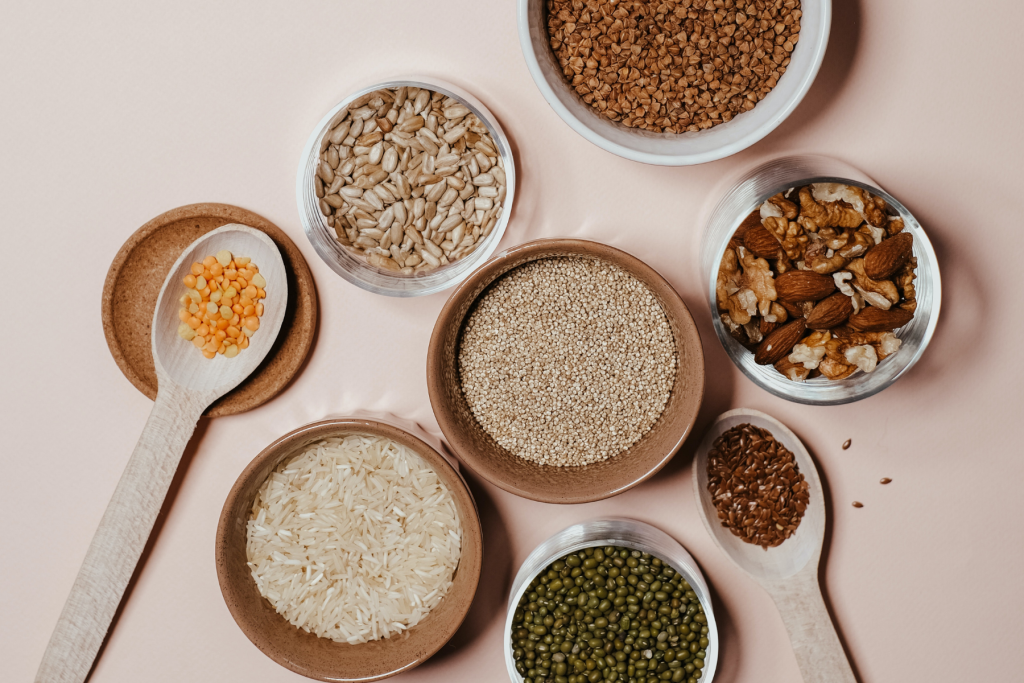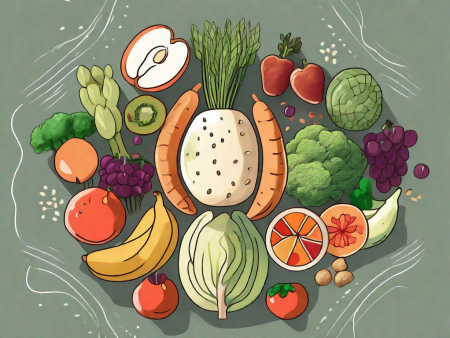Learn about the incredible benefits of incorporating lentils into your diet.
Discover the Benefits of Lentils in Your Diet
Are you looking for a simple and nutritious way to amp up your diet? Look no further than the humble lentil! These tiny legumes pack a serious punch when it comes to health benefits, and they’re incredibly versatile to boot. Whether you’re a seasoned lentil lover or new to the legume game, you’ll be delighted to discover the countless benefits that lentils bring to the table.
Understanding the Nutritional Value of Lentils

Before we delve into the specific benefits, let’s take a moment to appreciate the nutritional value of lentils. These little legumes are a treasure trove of essential nutrients, making them a fantastic addition to any well-rounded diet.
Lentils, scientifically known as Lens culinaris, have been cultivated for thousands of years and have become a staple food in many cultures around the world. They are not only delicious but also incredibly nutritious.
The Protein Power of Lentils
Firstly, lentils are an excellent source of plant-based protein. For all the vegans, vegetarians, and flexitarians out there, lentils are a delicious way to meet your protein needs. With approximately 18 grams of protein per cooked cup, lentils offer a substantial protein punch.
What makes lentils even more impressive is that they contain all the essential amino acids, making them a complete protein source. This is particularly important for individuals who follow a plant-based diet, as it ensures they get all the necessary building blocks for their body’s protein synthesis.
Essential Vitamins and Minerals in Lentils
Beyond protein, lentils are also packed with essential vitamins and minerals. These legumes are a rich source of iron, folate, potassium, and magnesium, among others. Iron is crucial for the production of red blood cells and the transportation of oxygen throughout the body. Folate, on the other hand, is essential for DNA synthesis and cell division.
Potassium and magnesium are both electrolytes that play a vital role in maintaining proper heart and muscle function. Potassium helps regulate blood pressure, while magnesium supports bone health and aids in energy production.
The Fiber Factor in Lentils
One of the standout benefits of lentils is their high fiber content. Fiber plays a crucial role in digestive health, promoting regularity and maintaining a healthy gut. Lentils are an excellent source of both soluble and insoluble fiber.
Soluble fiber forms a gel-like substance in the digestive tract, which helps slow down the absorption of sugars and cholesterol, contributing to better blood sugar control and heart health. Insoluble fiber, on the other hand, adds bulk to the stool, preventing constipation and promoting bowel regularity.
Moreover, the fiber in lentils acts as a prebiotic, providing nourishment for the beneficial bacteria in the gut. A healthy gut microbiome is essential for overall well-being, as it supports immune function and helps prevent various gastrointestinal disorders.
In conclusion, lentils are not only a versatile and tasty addition to meals but also a nutritional powerhouse. From their protein content to their abundance of vitamins, minerals, and fiber, lentils offer a wide range of health benefits. Whether you’re looking to improve your cardiovascular health, support your digestive system, or simply add more plant-based protein to your diet, lentils are an excellent choice.
The Health Benefits of Incorporating Lentils into Your Diet
Now that we’ve covered the nutritional aspects, let’s explore the specific health benefits that lentils bring to the table.
But first, let’s take a closer look at what lentils really are. Lentils are small, lens-shaped legumes that come in various colors, including green, brown, red, and black. They have been a staple in diets around the world for thousands of years, and for good reason.
Lentils and Heart Health
Heart health is a top priority for many, and lentils can be an excellent ally in this pursuit. Thanks to their high fiber content and low glycemic index, lentils can help reduce the risk of heart disease by keeping cholesterol levels in check and promoting stable blood sugar levels.
But how exactly do lentils achieve this? The soluble fiber found in lentils acts like a sponge in the digestive system, binding to cholesterol and preventing its absorption into the bloodstream. This mechanism helps lower LDL cholesterol levels, also known as the “bad” cholesterol, which can contribute to the development of heart disease.
In addition, lentils’ low glycemic index means that they are digested slowly, resulting in a gradual release of glucose into the bloodstream. This slow and steady release prevents sudden spikes in blood sugar levels, reducing the risk of insulin resistance and diabetes, both of which are closely linked to heart disease.
Lentils’ Role in Digestive Health
As mentioned earlier, lentils are a fiber powerhouse. This fiber not only aids in regularity but also supports a healthy digestive system. It can help prevent constipation, reduce the risk of colon cancer, and promote a diverse and thriving gut microbiome.
When consumed, the fiber in lentils adds bulk to the stool, making it easier to pass through the digestive tract. This promotes regular bowel movements and prevents the discomfort and complications associated with constipation.
Furthermore, lentils contain both soluble and insoluble fiber, which provide fuel for the beneficial bacteria in the gut. These bacteria play a crucial role in maintaining a healthy digestive system, aiding in nutrient absorption, and even influencing our mood and mental health.
Weight Management and Lentils
If you’re looking to shed a few pounds or maintain a healthy weight, lentils can be your secret weapon. Their high protein and fiber content helps keep you feeling fuller for longer, reducing the chances of overeating or reaching for unhealthy snacks.
Protein is known to be more satiating than carbohydrates or fats, and lentils are an excellent plant-based source of this essential macronutrient. By including lentils in your meals, you can increase your protein intake and promote feelings of fullness and satisfaction.
In addition, the fiber in lentils adds bulk to the diet without adding excessive calories. This means that you can enjoy a larger volume of food while consuming fewer calories, which is a key principle in weight management.
Lentils and Blood Sugar Control
For those managing diabetes or looking to stabilize blood sugar levels, lentils are an excellent choice. The combination of protein and fiber in lentils slows down the absorption of glucose, preventing spikes in blood sugar levels and promoting better glycemic control.
When we eat carbohydrates, they are broken down into glucose, which enters the bloodstream and raises blood sugar levels. However, the presence of protein and fiber in lentils slows down this process, allowing for a more gradual release of glucose into the bloodstream.
This slower release of glucose helps prevent sudden spikes and crashes in blood sugar levels, which can be particularly beneficial for individuals with diabetes or those at risk of developing the condition. By incorporating lentils into your diet, you can better manage your blood sugar levels and reduce the risk of complications associated with diabetes.
Different Types of Lentils and Their Unique Benefits
Now that we appreciate the overall benefits of lentils, let’s talk about the various types of lentils and what makes them special.
Green Lentils and Their Health Benefits
Green lentils, with their earthy flavor and firm texture, are chock-full of dietary fiber and are a great source of iron. They’re an excellent choice for salads or hearty soups that require a bit more bite.
Did you know that green lentils are also rich in folate? Folate is a B vitamin that plays a crucial role in cell growth and development. It is especially important for pregnant women as it helps prevent certain birth defects. So, incorporating green lentils into your diet can be beneficial for both taste and health!
Additionally, green lentils are a good source of magnesium, which is essential for maintaining healthy bones and regulating blood pressure. Including green lentils in your meals can help support your overall well-being.
Red Lentils and Their Health Benefits
On the flip side, red lentils are quick-cooking and have a mellow, delicate flavor. They’re perfect for more creamy soups or stews and are an excellent source of antioxidants and B vitamins.
Did you know that red lentils are packed with plant-based protein? They are a great option for vegetarians and vegans looking to meet their protein needs. In fact, just one cup of cooked red lentils provides about 18 grams of protein!
In addition to protein, red lentils are rich in antioxidants such as anthocyanins, which give them their vibrant red color. These antioxidants help protect your body against harmful free radicals and reduce the risk of chronic diseases.
Black Lentils and Their Health Benefits
Black lentils, also known as beluga lentils due to their resemblance to caviar, have a rich and nutty flavor. Packed with fiber and protein, these little gems are a wonderful addition to salads or as a side dish.
Did you know that black lentils are a great source of resistant starch? Resistant starch is a type of carbohydrate that acts like dietary fiber in the body. It helps promote a healthy digestive system and can even aid in weight management.
Furthermore, black lentils are rich in anthocyanins, similar to red lentils. These powerful antioxidants have been linked to improved heart health and reduced inflammation.
So, whether you choose green, red, or black lentils, each variety offers its own unique set of health benefits. Incorporating a variety of lentils into your diet can provide a range of nutrients and flavors to keep your meals exciting and nutritious!
How to Incorporate Lentils into Your Daily Meals
Now that you know the wonders of lentils and their different varieties, let’s get into the fun part – incorporating them into your daily meals!

Delicious and Nutritious Lentil Recipes
From soups to stews, salads to burgers, the possibilities with lentils are endless. Consider trying a lentil curry, a lentil and vegetable stir-fry, or even a lentil loaf. Don’t be afraid to get creative and experiment in the kitchen!
Tips for Cooking Lentils
Cooking lentils is a breeze, but there are a few tips to ensure they turn out just right. Remember to rinse them well before cooking and be mindful of the cooking time, as different varieties may require different cooking durations. With a little practice, you’ll become a lentil-cooking master in no time!
Storing and Preserving Lentils for Long-Term Use
If you find yourself unable to use up all your lentils at once, fear not! These legumes are easily stored in a cool and dry place, such as a pantry or airtight container. They have a long shelf life and are a fantastic option for stocking up on nutritious ingredients.
So there you have it – a comprehensive guide to the benefits of lentils in your diet. From their nutritional value to the numerous health benefits and culinary versatility, lentils are a true dietary powerhouse. So go ahead, embrace the lentil love, and discover the countless ways they can transform your meals into delicious and nutritious creations!







